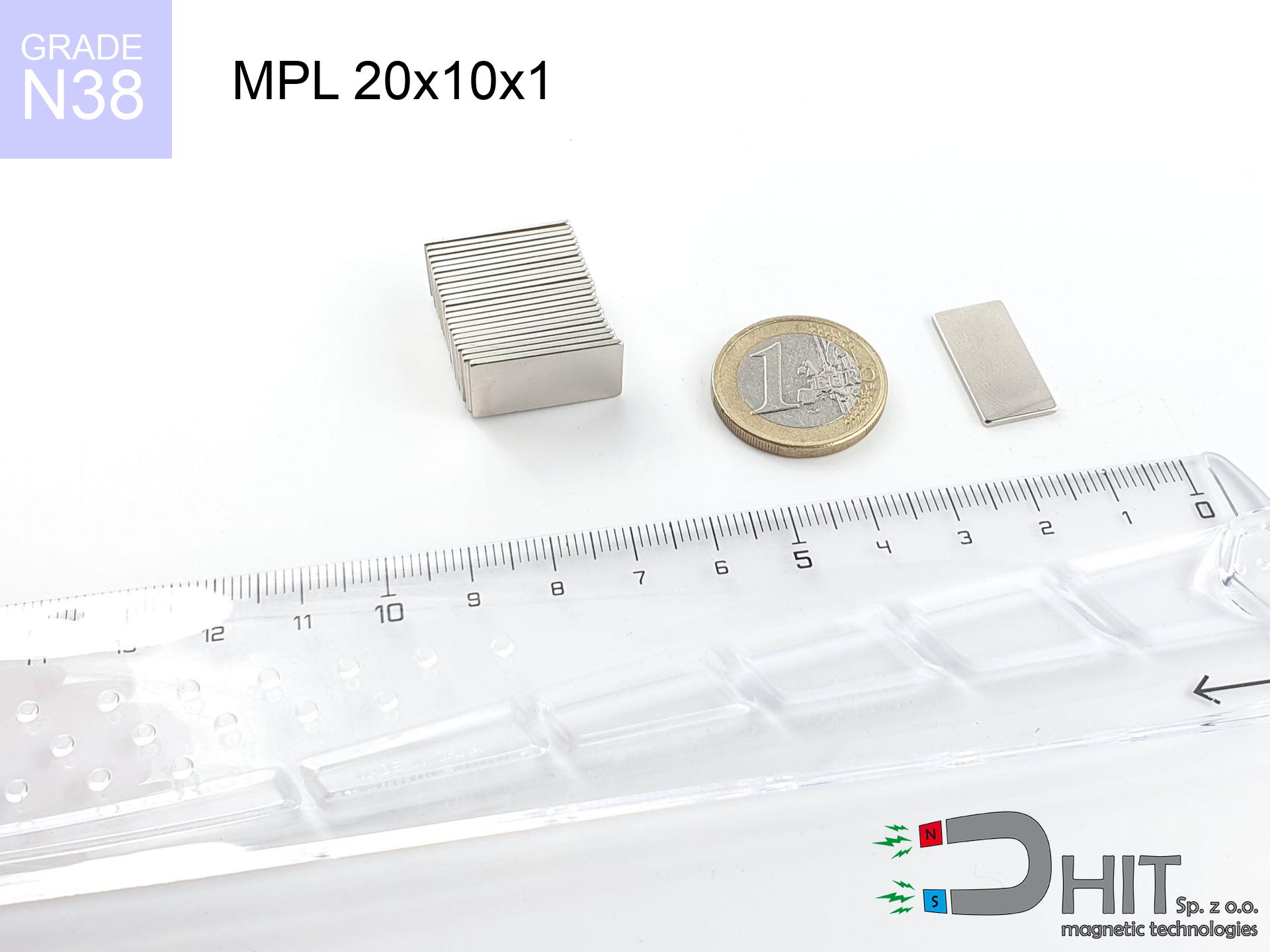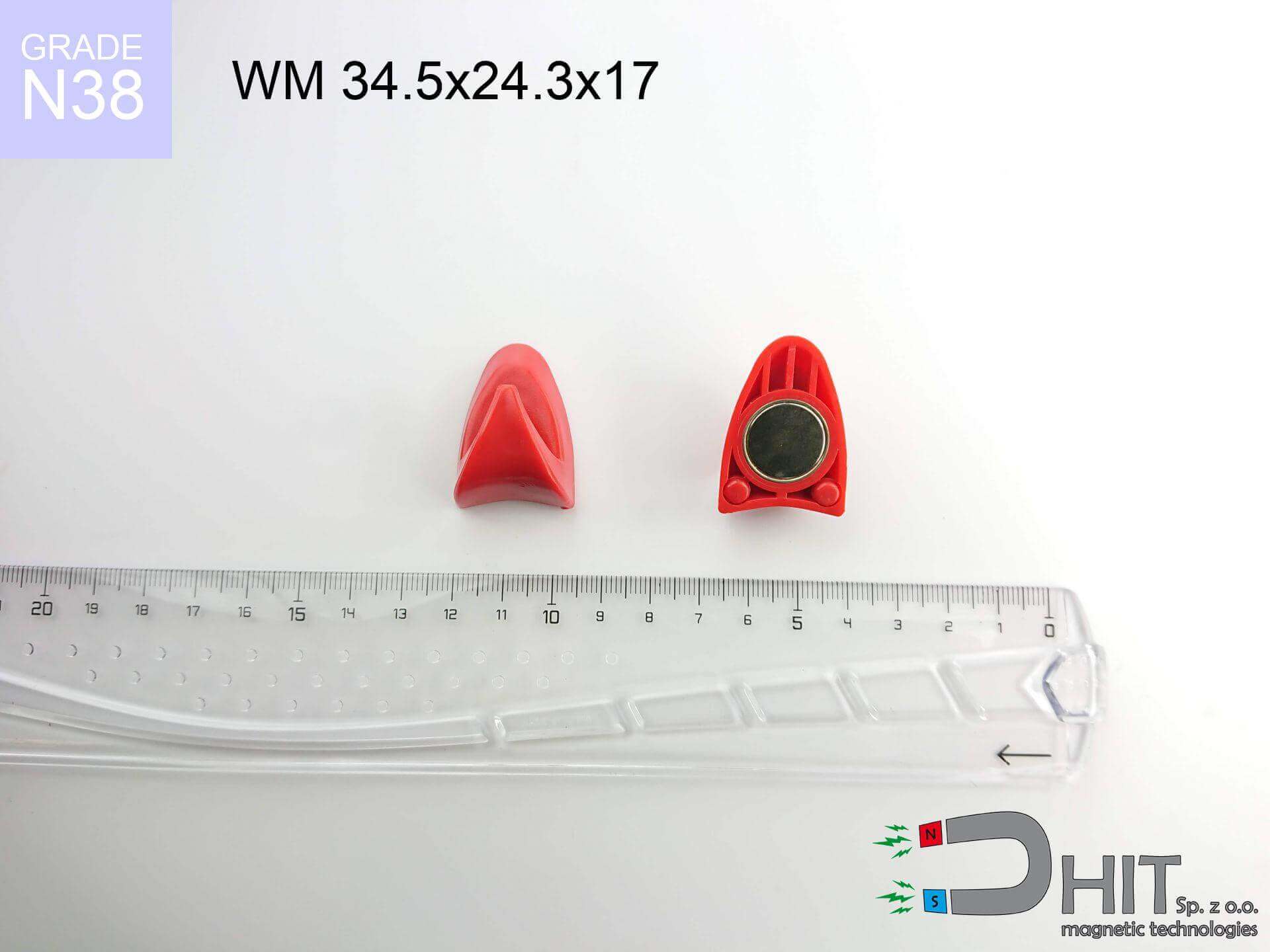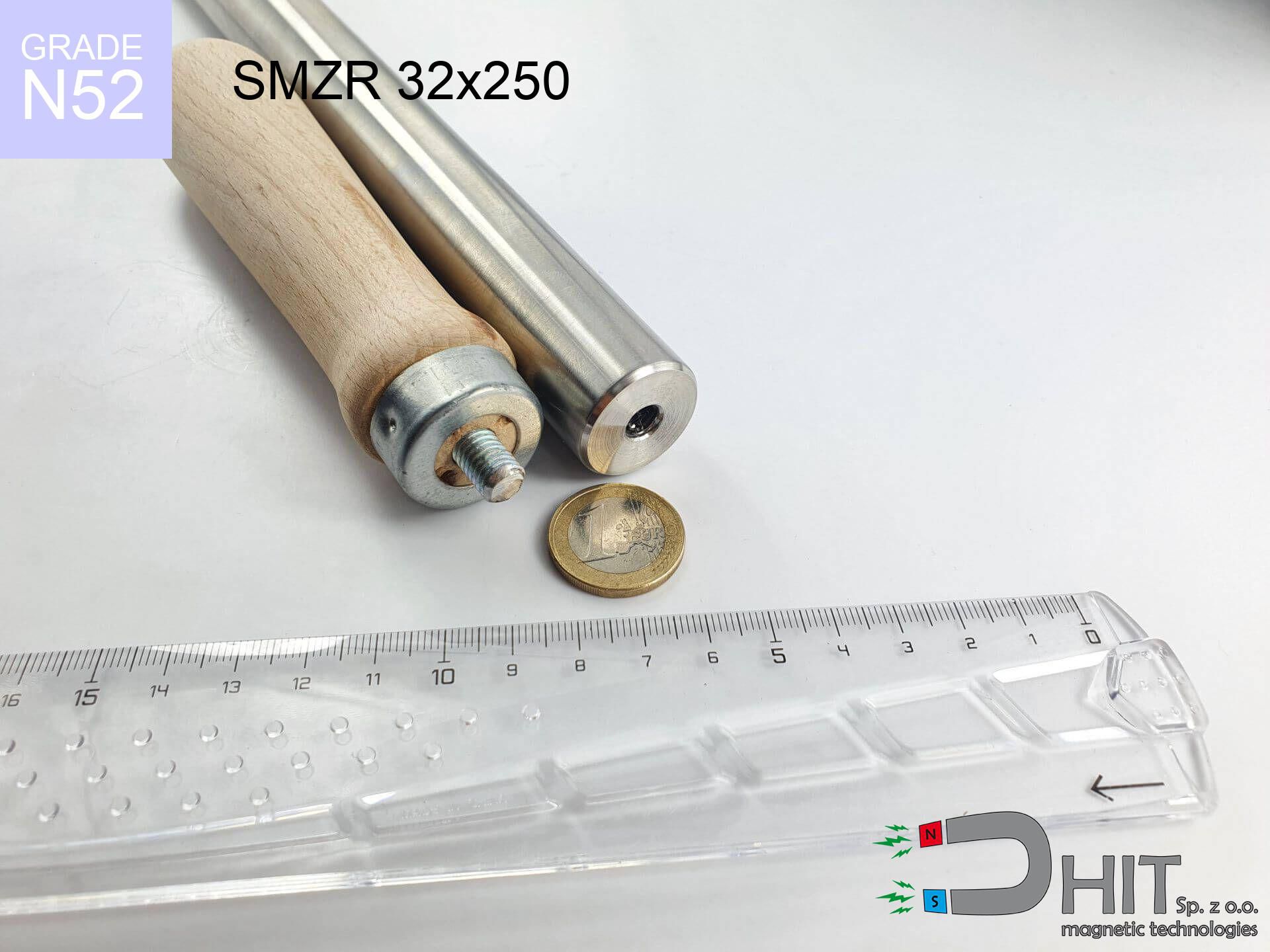SM 32x175 [2xM8] / N52 - magnetic roller
magnetic separator
catalog number 130359
GTIN: 5906301813071
diameter Ø
32
mm [±0,1 mm]
height
175
mm [±0,1 mm]
max. temperature
≤ 80
°C
catalog number 130359
GTIN: 5906301813071
diameter Ø
32 mm [±0,1 mm]
height
175 mm [±0,1 mm]
max. temperature
≤ 80 °C
602.70 ZŁ gross price (including VAT) / pcs +
490.00 ZŁ net price + 23% VAT / pcs
bulk discounts:
need more quantity?Do you have difficulties in choosing?
Give us a call tel: +48 22 499 98 98 or contact us through contact form on the contact page. You can check the power and the shape of neodymium magnets in our force calculator force calculator
Orders placed by 2:00 PM will be shipped on the same business day.
Specification: magnetic separator 32x175 [2xM8] / N52
Magnetic properties of the material N52
Physical properties of sintered neodymium magnets Nd2Fe14B
Notice: Undefined index: in /home/currara/domains/dhit.pl/public_html/app/scripts/product-details.php on line 829
Choose recommended products
Advantages and disadvantages of neodymium magnets NdFeB.
In addition to immense power, neodymium magnets have the following advantages:
- They do not lose strength over time. After about 10 years, their power decreases by only ~1% (theoretically),
- They are extremely resistant to demagnetization by external magnetic field,
- In other words, thanks to the shiny coating of nickel, gold, or silver, the element acquires an aesthetic appearance,
- They have exceptionally high magnetic induction on the surface of the magnet,
- By using an appropriate combination of materials, they can achieve high thermal resistance, allowing them to operate at temperatures up to 230°C and above...
- The ability for precise shaping or customization to specific needs – neodymium magnets can be produced in a wide range of shapes and sizes, which enhances their versatility in applications.
- Wide application in the industry of new technologies – are utilized in computer drives, electric motors, medical devices and other advanced devices.
Disadvantages of neodymium magnets:
- They are fragile when subjected to a strong impact. If the magnets are exposed to impacts, we recommend using magnets in a metal holder. The steel housing in the form of a holder protects the magnet from impacts and at the same time increases its overall strength,
- They lose strength at high temperatures. Most neodymium magnets experience permanent loss of strength when heated above 80°C (depending on the form and height). However, we also offer special magnets with high temperature resistance, up to 230°C,
- Due to their susceptibility to corrosion in a humid environment, we recommend using waterproof magnets made of rubber, plastic, or other moisture-resistant materials when using them outdoors,
- Limited ability to create threads or complex shapes in the magnet - the use of a housing is recommended - magnetic holder
- Health risk arising from small pieces of magnets are risky, when accidentally ingested, which is particularly important in the context of children's health. It's also worth noting that tiny parts of these magnets can hinder the diagnostic process in case of swallowing.
Precautions
Neodymium magnets are over 10 times more powerful than ferrite magnets (the ones in speakers), and their strength can surprise you.
Read the information on our website on how to properly utilize neodymium magnets and avoid significant harm to your body and unintentional damage to the magnets.
Do not place neodymium magnets near a computer HDD, TV, and wallet.
Strong magnetic fields emitted by neodymium magnets can damage magnetic storage media such as floppy disks, credit cards, magnetic ID cards, cassette tapes, video tapes, or other devices. They can also damage televisions, VCRs, computer monitors, and CRT displays. Avoid placing neodymium magnets in close proximity to electronic devices.
Dust and powder from neodymium magnets are highly flammable.
Do not attempt to drill into neodymium magnets. Mechanical processing is also not recommended. Once crushed into fine powder or dust, this material becomes highly flammable.
Keep neodymium magnets away from people with pacemakers.
Neodymium magnets generate strong magnetic fields. As a result, they interfere with the operation of a pacemaker. This is because many of these devices are equipped with a function that deactivates the device in a magnetic field.
Under no circumstances should neodymium magnets be brought close to GPS and smartphones.
Intense magnetic fields generated by neodymium magnets interfere with compasses and magnetometers used in navigation, as well as internal compasses of smartphones and GPS devices.
The magnet coating contains nickel, so be cautious if you have a nickel allergy.
Studies show a small percentage of people have allergies to certain metals, including nickel. An allergic reaction often manifests as skin redness and rash. If you have a nickel allergy, you can try wearing gloves or simply avoid direct contact with nickel-plated neodymium magnets.
Magnets made of neodymium are delicate as well as can easily break as well as shatter.
Magnets made of neodymium are extremely fragile, and by joining them in an uncontrolled manner, they will break. Neodymium magnets are made of metal and coated with a shiny nickel surface, but they are not as hard as steel. In the event of a collision between two magnets, there may be a scattering of fragments in different directions. Protecting your eyes is crucial in such a situation.
It is important to maintain neodymium magnets out of reach from children.
Remember that neodymium magnets are not toys. Be cautious and make sure no child plays with them. They can be a significant choking hazard. If multiple magnets are swallowed, they can attract to each other through the intestinal walls, causing severe injuries, and even death.
Neodymium Magnets can attract to each other, pinch the skin, and cause significant injuries.
Magnets will jump and contact together within a radius of several to almost 10 cm from each other.
Neodymium magnets can become demagnetized at high temperatures.
In certain circumstances, Neodymium magnets can lose their magnetism when subjected to high temperatures.
So that know how powerful neodymium magnets are and why they are so dangerous, see the article - Dangerous powerful neodymium magnets.

![SM 32x175 [2xM8] / N52 - magnetic roller SM 32x175 [2xM8] / N52 - magnetic roller](https://cdn3.dhit.pl/graphics/products/sm-32x175-2xm8-cep.jpg)





